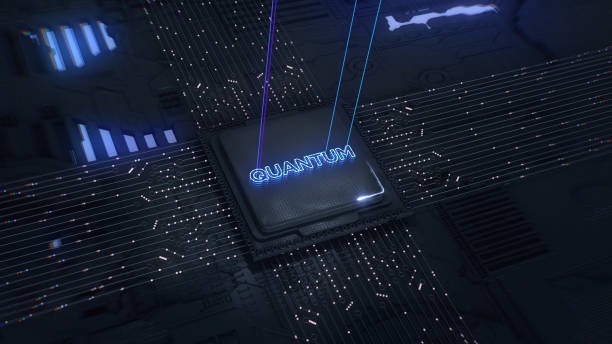“Categorical Deep Learning and Algebraic Theory of Architectures” has upset various fields, from normal language handling to PC vision. Be that as it may, the mission for a broadly useful system for determining and concentrating on profound learning structures stays subtle. This article dives into unmitigated profound learning and the mathematical hypothesis of models, introducing our situation on this intricate subject. We accept that ongoing methodologies come up short on intelligent extension between indicating requirements for models and their executions.
Understanding Categorical Deep Learning and Algebraic Theory of Architectures
What are Deep Learning Architectures?
Profound learning models allude to the construction of brain organizations, including the course of action of layers, sorts of neurons, and the associations between them. These models decide how information is handled and changed to create wanted yields.
Common Types of Architectures
- Feedforward Brain Organizations (FNNs): The most straightforward structure where associations don’t frame cycles.
- Convolutional Brain Organizations (CNNs): Fundamentally utilized for picture handling assignments.
- Intermittent Brain Organizations (RNNs): Intended for succession information, similar to time series or normal language.
- Transformer Organizations: High level models for grouping information, particularly in NLP.
The Need for a General-Purpose Framework
Current Challenges
Divided Approaches: Existing strategies for planning and dissecting models are many times impromptu and miss the mark on bound together hypothesis.
Intricacy in Determinations: Characterizing requirements and executions independently prompts irregularities and shortcomings.
Desired Features of a Framework
- Bound together Hypothesis: A cognizant numerical establishment.
- Adaptability: Capacity to indicate many models.
- Versatility: Proficiently handle huge and complex models.
Categorical Deep Learning
Introduction to Category Theory
Classification hypothesis is a part of science that arrangements with theoretical designs and connections between them. It gives a significant level approach to understanding and formalizing complex frameworks.
Application in Deep Learning
- Articles and Morphisms: Brain network layers should be visible as items, and the changes between layers as morphisms.
- Functors: These can plan between various classifications, offering a method for changing one design into one more while protecting primary properties.
- Normal Changes: Give a system to grasping the connections between various brain network changes.
Advantages
- Theoretical and General: Gives an undeniable level deliberation that can envelop different structures.
- Seclusion: Works with the development of complicated designs from easier parts.
Algebraic Theory of Architectures
Basics of Algebraic Theory
Mathematical hypothesis includes the investigation of arithmetical designs like gatherings, rings, and fields. With regards to profound learning, it can help in formalizing the properties and ways of behaving of brain organizations.
Algebraic Structures in Neural Networks
- Gatherings: Address balances in information or organization structure.
- Rings and Fields: Valuable in grasping the mathematical properties of brain network activities.
Benefits
Formal Confirmation: Guarantees that designs fulfill specific wanted properties.
Improvement: Logarithmic strategies can prompt more proficient preparation calculations.
Bridging the Gap: A Unified Framework
Key Components
Particular of Imperatives: Utilizing class hypothesis to characterize undeniable level limitations that designs should fulfill.
Execution Subtleties: Utilizing arithmetical hypothesis to guarantee that the executions stick to the predetermined requirements.
Steps to Develop the Framework
- Characterize Classes: Distinguish the applicable classifications for various sorts of brain network layers and tasks.
- Lay out Functors: Foster mappings between these classes to change and analyze various models.
- Apply Arithmetical Strategies: Utilize logarithmic designs to break down and enhance the executions.
Example Workflow
- Select Design Type: Pick between CNN, RNN, or different models.
- Indicate Imperatives: Characterize the necessary properties utilizing straight out hypothesis.
- Carry out Organization: Foster the organization utilizing mathematical techniques to guarantee consistence with the requirements.
FAQs
What is categorical deep learning?
Unmitigated profound learning utilizes class hypothesis to give a significant level, dynamic system for understanding and planning brain network structures.
How does algebraic theory apply to deep learning?
Logarithmic hypothesis formalizes the properties and ways of behaving of brain organizations, prompting more proficient and certain executions.
Why is a unified framework important?
A bound together system guarantees consistency, productivity, and versatility in planning and carrying out profound learning models.
Can categorical and algebraic theories be used together?
Indeed, joining these hypotheses can give a hearty system that use the qualities of the two methodologies.
Conclusion
The journey for a universally useful system for determining and concentrating on profound learning designs is progressing. By consolidating downright profound learning with the arithmetical hypothesis of structures, we can overcome any barrier between undeniable level requirements and definite executions. This approach vows to bring more consistency, effectiveness, and versatility to the advancement of profound learning models.


